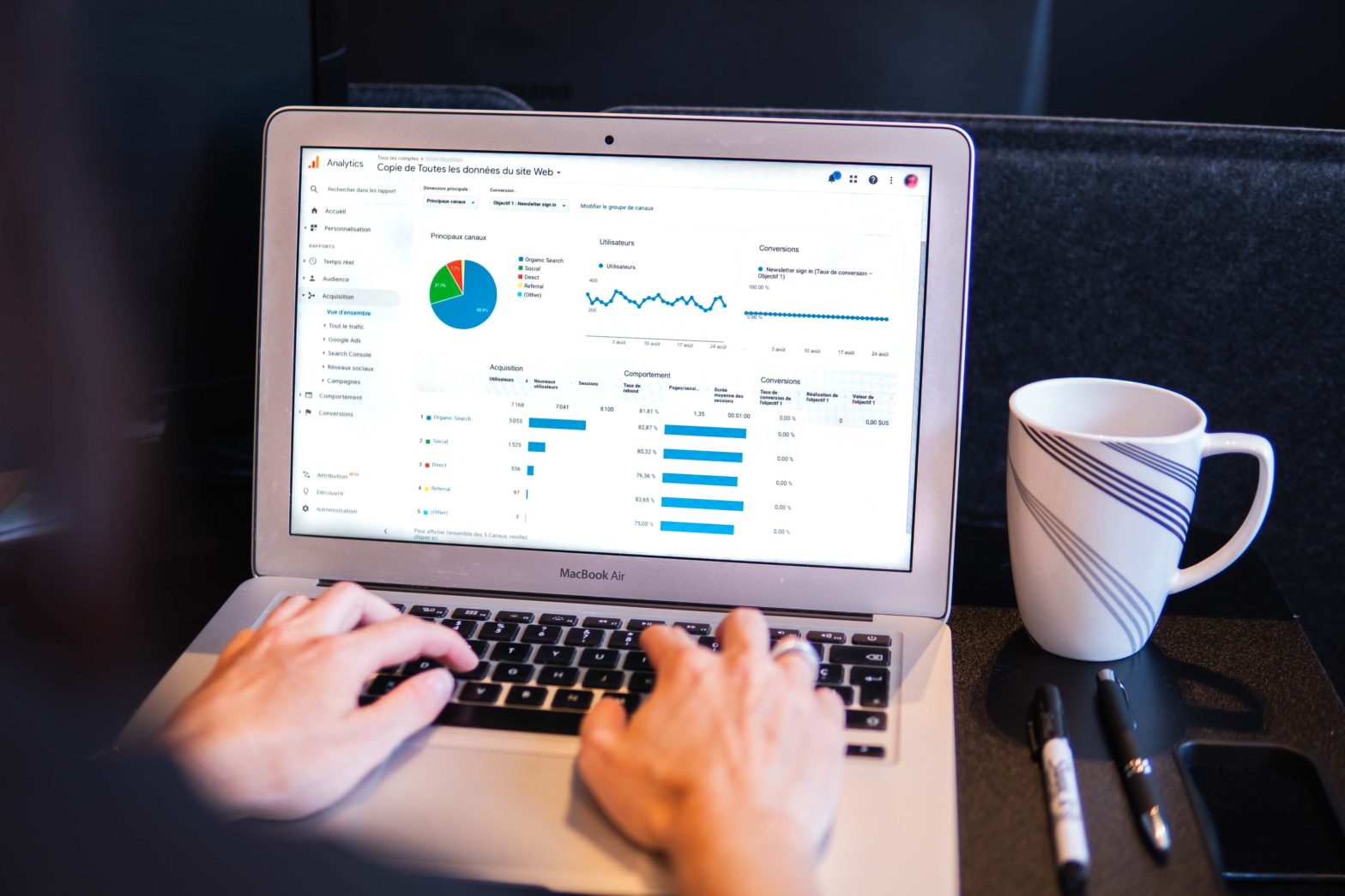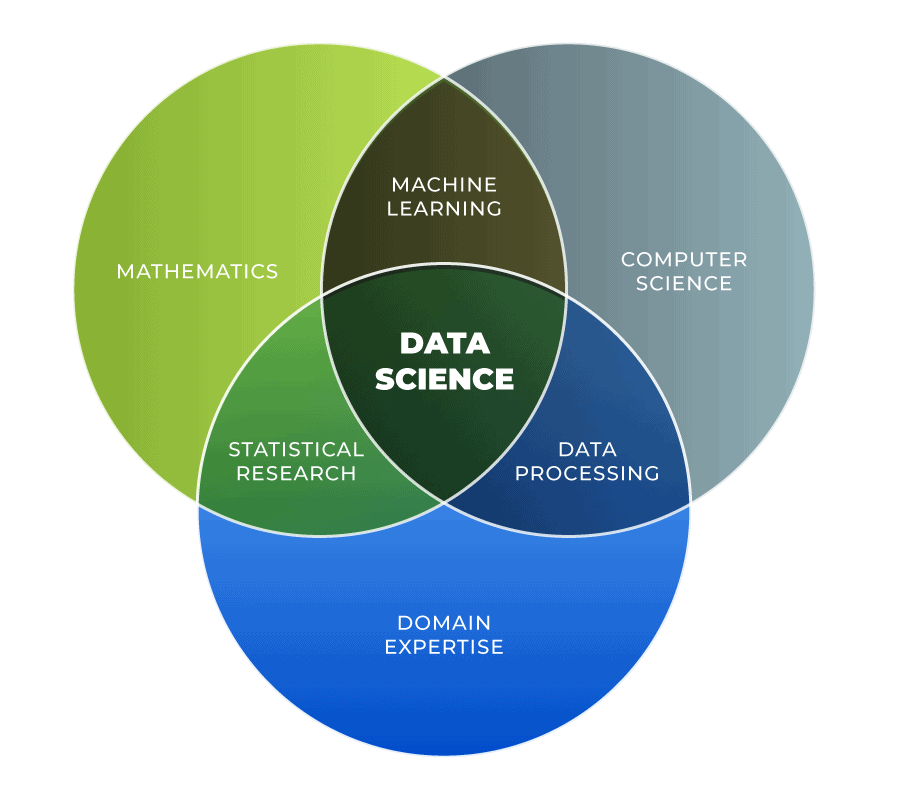
What is data science – all you need to know

In the digital age we live in, data collection, data analysis, and data warehousing are detrimental to the success of a business. Businesses recognize that their success is dependent on the ability to extract meaningful insights from user data and apply them in their strategy. This is where data scientists come in. To help you better understand what data science is and everything there is to it, we created this ‘know-how’ article.
What is data science? Definition
So, what is data science exactly?
Data science is a field within the study of computer science, with a particular focus on the use of scientific methods, processes, algorithms, and systems to extract knowledge and insights from structured and unstructured data. Computer science on the other hand is responsible for building the hardware and programming software.
Through the use of modern analytics tools and data visualization tools, data scientists identify patterns in user behavior and influence business decisions.
Data science is applicable to most industries and has a broad range of applications. Machine learning algorithms are used by data scientists to build predictive models to identify unseen patterns, derive meaningful information, and influence business decisions.
Nowadays, data scientists must go beyond the traditional skills of analyzing data, data mining, and programming skills. They must also present the data in an appealing and easy-to-read format with static, animated, and interactive visualizations.
What is data science used for
The business world is observing an exponential shift from structured to unstructured data. As of 2021, unstructured data makes up 80% of the data collected by organizations. So, businesses without advanced data mining tools, are missing out on valuable business intelligence. The need for more complete data analyst tools to analyze big data is growing.
Data science uses predictive analytics, prescriptive analytics, and machine learning to provide businesses with actionable insights.
- Prescriptive analytics (a relatively new field) provides advice by quantifying the effects of future decisions and advising on possible outcomes before making a decision. Prescriptive analytics answer the ‘what should we do?’ question.
- Predictive analytics utilizes statistical analysis and forecasting to provide businesses with actionable insights into future outcomes. Predictive analytics provides an answer to ‘what could happen?’.
- Machine learning is the tool used by data scientists to automate prescriptive and predictive analytics to identify patterns and behaviors. Machine learning models are split into two subcategories, making predictions and pattern discovery.
- Machine learning for making predictions identifies future trends through structured data and supervised learning.
- Machine learning for pattern discovery identifies hidden patterns (unstructured data) within a dataset before making meaningful predictions (a lack of labels or groups makes this unsupervised learning).
Data science lifecycle
The data science lifecycle is composed of five core processes, each with its distinct data processing task:
- Capture – collecting raw structured and unstructured data from all relevant sources
- Data Acquisition
- Data Entry
- Signal Reception
- Data Extraction
- Maintain – the raw data is compiled and made available in a consistent format for analytics, machine learning, or deep learning models. This step includes data cleansing, removing duplicates, and reformatting data.
- Data Warehousing
- Data Cleansing
- Data Staging
- Data Processing
- Data Architecture
- Process – data scientists examine the prepared data for patterns, ranges, and biases to determine its ability to analyze data.
- Data Mining
- Clustering/Classification
- Data Modeling
- Data Summarization
- Analyze – this is where data analysis happens. Data scientists apply statistical analysis, predictive analytics, regression, machine learning, and deep learning algorithms to extract meaningful insights from the big data collected.
- Exploratory/Confirmatory
- Predictive Analysis
- Regression
- Text Mining
- Qualitative Analysis
- Communicate – the data scientist presents their findings in a clear and structured way, usually as charts, graphs, and reports. The data visualizations make it easier for decision-makers to understand the impact of big data on their business.
- Data Reporting
- Data Visualization
- Business Intelligence
- Decision Making
Data science tools
A data scientist is responsible for data mining, manipulating, processing, and creating predictions from supervised and unsupervised data. To do this, data scientists need various programming languages and statistical tools.
Here are the top 16 most popular data science resources amongst data scientists:
- D3.js
- D3.js is a JavaScript library for creating custom data visualizations in a web browser. It can be used to create interactive, animated, annotated, and quantitative data visualizations.
- SAS
- SAS is a tool for data management, advanced analytics, business intelligence, predictive analytics, and so on.
- Apache Spark
- A processing tool used for big data workloads, quickly analyzing data sets of any size.
- IBM SPSS
- IBM SPSS is designed to analyze complex statistical data.
- BigML
- A scalable machine learning platform.
- Keras
- An open source deep learning API programming interface, allowing data scientists to use the TensorFlow machine learning platform more easily.
- Matlab
- Responsible for analyzing data, and designing systems and products.
- PyTorch
- Responsible for training deep learning models based on neural networks.
- Julia
- A programming language used for machine learning and various data science applications.
- Ggplot2
- Ggplot2 is a data visualization tool for statistical programming language R.
- Tableau
- Tableau is another business intelligence data visualization tool.
- Jupyter
- A web application that encourages data scientists, data engineers, and mathematicians to collaborate on the creation, edition, and sharing of code.
- Matplotlib
- A library for creating visualizations of data in analytics applications for the Python programming language.
- NumPy
- Provides an array of mathematical and logic functions and supports linear algebra, random number generation, and other operations.
- Pandas
- Platform used for data analysis and manipulation.
- Python
- One of the most popular programming languages (top 5 according to the DevSkiller IT skills report 2022), created to build websites and software, automate tasks and conduct data analysis.
Data science prerequisites
The following core skills are necessary to excel in the data science field:
- Statistical and mathematical skills
- Coding and programming skills
- Business analyst skills
- Data visualization skills
- Data analysis skills

But this is not all. A skilled data scientist should also be able to present findings to decision-makers clearly and coherently. Excellent storytelling and communication are essential for setting yourself apart from other data scientists.
Want to know how much a data scientist earns? Check out our data scientist salary info
Data science vs other disciplines
This article has covered what data science is, its lifecycle, and the necessary skills to excel in this profession. Let us now look at how data science compares to other disciplines.
Data science vs data analytics
The main difference between data science and data analytics is how the raw data is used.
Data analysts examine large data sets to identify trends, develop charts and create visual presentations. In comparison, data scientists are responsible for data visualization, its design, and constructing new processes for data modeling and production. Data analysts generally focus on historical data, and data scientists look at structured and unstructured data.
There is a need for data analysts to prove their knowledge of intermediate statistics and demonstrate problem-solving skills.
Data science vs machine learning
Data science focuses on extracting meaning from data sets, and machine learning focuses on the tools and techniques for building models capable of learning by themselves through data.
A data scientist creates the methodology of research and the theory behind algorithms that a machine learning engineer uses to build models.
Data science vs artificial intelligence
Artificial intelligence (AI) is a niche area of data science, a broader discipline. Artificial intelligence is a collection of complex computer algorithms that mimic human intelligence.
The difference between data science vs artificial intelligence is that data science involves pre-processing analysis, prediction, and visualization. AI, on the other hand, is the predictive model capable of foreseeing events.
Data science vs data engineering
The main difference between data science and data engineering is that data engineers are responsible for building and maintaining systems and structures that store, extract and organize data.
Data scientists then analyze that data to predict trends and deliver valuable business insights.
Check out these 15 in-demand tech roles
Demand for data scientists
As of 2021, Data Science was the fastest growing IT skill, seeing a 295% growth in popularity.. For comparison, Python came in second, with a 154% growth in interest. For those in the industry, this is no surprise given how data-driven companies are becoming.
Data science has made its way pretty much into almost every industry, from banking software, and detecting fraudulent transactions to image recognition and recommendation systems.
The growing demand for skilled data scientists is also apparent in the increase in recruitment tasks for data science. According to the Top IT skills Report 2022, data science recruitment tasks saw a 158.83% increase on our technical screening platform, TalentScore. Only to be succeeded by Scala and Blockchain, which saw a 261.11% and 216.67% growth in tasks.
However, DevSkiller is not the only company to observe this growth. In its latest report, IBM reports a 39% growth in demand for data scientists and data engineers. The IBM report acknowledges that although the need for data scientists, analysts, and engineers is growing, these positions are among the hardest to fill. The implications of this raise serious concerns for HR specialists and recruiters responsible for identifying the appropriate candidates.
How do you assess data science professionals for recruitment?
Naturally, as the demand for data processing and analysis grows, so does the need for data scientists. But, to make the most of the business intelligence tools available, companies must hire skilled data scientists.
Data science is a hands-on role, so recruiters and HR specialists must assess data scientists’ practical skills and ability to work on real-life examples. Such assessments give a real insight into how data scientists approach a real work problem and their ability to resolve it.
Finding and assessing data scientists’ skills can be overwhelming, especially to those who are not data scientists or data engineers.
Fear not, for DevSkiller understands this and has created the RealLifeTesting™ methodology. The RealLifeTesting methodology involves evaluating data scientists’ skills based on work sample tests focused on coding. As a potential employer, you can evaluate how each candidate approaches real-life challenges and their ability to solve them.
Remember, in data science the theory is important, but, the top candidates are the ones with practical skills.
Want to know more? Download the FREE DevSkiller Ebook,
The key roles of a modern data-driven organization
Foto von Myriam Jessier auf Unsplash




